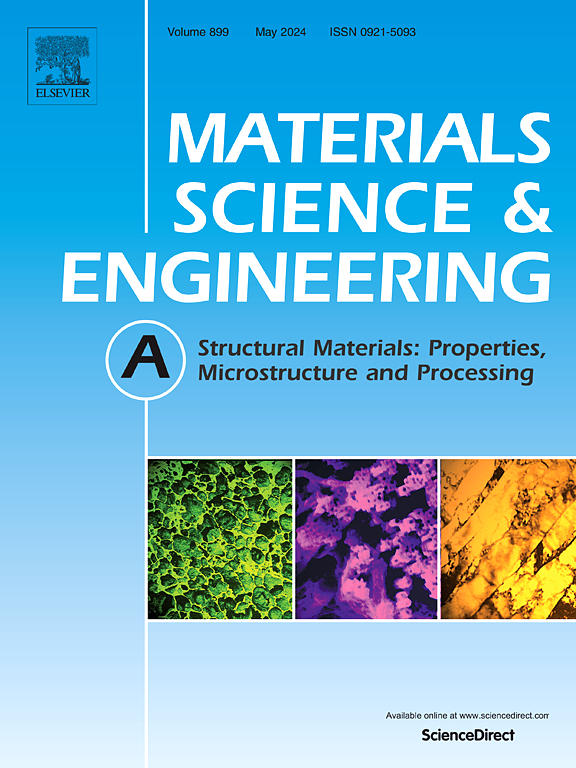Fe-Al合金的片层取向调制
IF 6.1
2区 材料科学
Q1 MATERIALS SCIENCE, MULTIDISCIPLINARY
引用次数: 0
摘要
Fe-Al金属间合金以其优异的抗氧化和耐腐蚀性能而闻名,在各个工业领域有着广阔的应用前景。在所有Fe-Al相和组织中,由Fe5Al8(ε)→FeAl + FeAl2共晶转变产生的全层状组织的合金具有较好的抗裂性,特别是当层状取向与加载方向平行时。为了使Fe-Al合金具有平行片层取向,分析了相变过程中Fe5Al8和FeAl2之间的界面。然后使用布拉姆菲特平面失配方法定量比较0°和45°取向片层之间的差异。0°取向片层的失配率为46.2%,45°取向片层的失配率为58.6%,表明在0°和45°取向片层之间存在一个可控的取向调节窗口。因此,采用定向凝固的方法来控制过冷,控制不同取向片的形核和长大。力学试验表明,0°取向片层的性能优于45°取向片层和铸态合金。因此,这种固定的层状取向可以为Fe-Al金属间化合物的应用提供更多的机会。本文章由计算机程序翻译,如有差异,请以英文原文为准。
Lamellar orientation modulation of Fe–Al alloys
Fe–Al intermetallic alloys, known for their superior oxidation and corrosion resistance, show broad application prospects in various industries. Among all Fe–Al phases and structures, alloys with a fully lamellar structure produced by the eutectoid transformation Fe5Al8(ε) → FeAl + FeAl2 exhibit better resistance to cracking especially when the lamellar orientation is aligned parallel to the loading direction. To achieve Fe–Al alloys with parallel lamellar orientation, we analyze the interface between Fe5Al8 and FeAl2 during phase transformation. The Bramfitt planar disregistry method is then used to quantitatively compare the differences between 0°- and 45°- oriented lamellae. The calculated disregistry is 46.2 % for 0°-oriented lamellae and 58.6 % for 45°-oriented lamellae, which demonstrates a controllable window for regulating lamellar orientation between 0° and 45°. Accordingly, directional solidification is employed to control the undercooling, as well as the nucleation and growth of lamellae with different orientations. The mechanical tests indicate that 0°-oriented lamellae exhibit better performance compared with both 45°-oriented lamellae and as-cast alloys. Thus, this fixed lamellar orientation could provide expanded opportunities for Fe–Al intermetallic applications.
求助全文
通过发布文献求助,成功后即可免费获取论文全文。
去求助
来源期刊

Materials Science and Engineering: A
工程技术-材料科学:综合
CiteScore
11.50
自引率
15.60%
发文量
1811
审稿时长
31 days
期刊介绍:
Materials Science and Engineering A provides an international medium for the publication of theoretical and experimental studies related to the load-bearing capacity of materials as influenced by their basic properties, processing history, microstructure and operating environment. Appropriate submissions to Materials Science and Engineering A should include scientific and/or engineering factors which affect the microstructure - strength relationships of materials and report the changes to mechanical behavior.
 求助内容:
求助内容: 应助结果提醒方式:
应助结果提醒方式:


